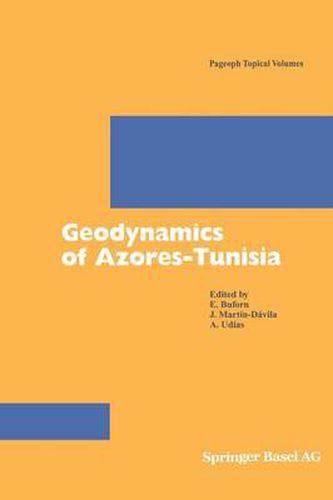Readings Newsletter
Become a Readings Member to make your shopping experience even easier.
Sign in or sign up for free!
You’re not far away from qualifying for FREE standard shipping within Australia
You’ve qualified for FREE standard shipping within Australia
The cart is loading…






This title is printed to order. This book may have been self-published. If so, we cannot guarantee the quality of the content. In the main most books will have gone through the editing process however some may not. We therefore suggest that you be aware of this before ordering this book. If in doubt check either the author or publisher’s details as we are unable to accept any returns unless they are faulty. Please contact us if you have any questions.
The Azores-Tunisia region is formed by the western part of the plate boundary between Eurasia and Africa. This plate boundary presents a complex nature due to its proximity to the pole of rotation of the African plate. This condition produces crustal extensions and normal faulting at the Azores archipelago, transcurrent motion with strike slip faulting at the center part of the Azores-Gibraltar fault and at the eastern end, from the Gulf of Cadiz to Tunisia, plate convergence with reverse faulting. In this last part, the collision of Iberia with northern Morocco produces complex phenomena with intermediate depth and deep earthquakes and an extensional regime at the Alboran sea. Recently, new evidence has been gathered in this region based on observations from geology, geodesy, mainly through GPS measurements, seismology, especially with the installation of broad-band stations, and other fields of geophysics, such as paleomagnetism and gravimetry.
$9.00 standard shipping within Australia
FREE standard shipping within Australia for orders over $100.00
Express & International shipping calculated at checkout
This title is printed to order. This book may have been self-published. If so, we cannot guarantee the quality of the content. In the main most books will have gone through the editing process however some may not. We therefore suggest that you be aware of this before ordering this book. If in doubt check either the author or publisher’s details as we are unable to accept any returns unless they are faulty. Please contact us if you have any questions.
The Azores-Tunisia region is formed by the western part of the plate boundary between Eurasia and Africa. This plate boundary presents a complex nature due to its proximity to the pole of rotation of the African plate. This condition produces crustal extensions and normal faulting at the Azores archipelago, transcurrent motion with strike slip faulting at the center part of the Azores-Gibraltar fault and at the eastern end, from the Gulf of Cadiz to Tunisia, plate convergence with reverse faulting. In this last part, the collision of Iberia with northern Morocco produces complex phenomena with intermediate depth and deep earthquakes and an extensional regime at the Alboran sea. Recently, new evidence has been gathered in this region based on observations from geology, geodesy, mainly through GPS measurements, seismology, especially with the installation of broad-band stations, and other fields of geophysics, such as paleomagnetism and gravimetry.